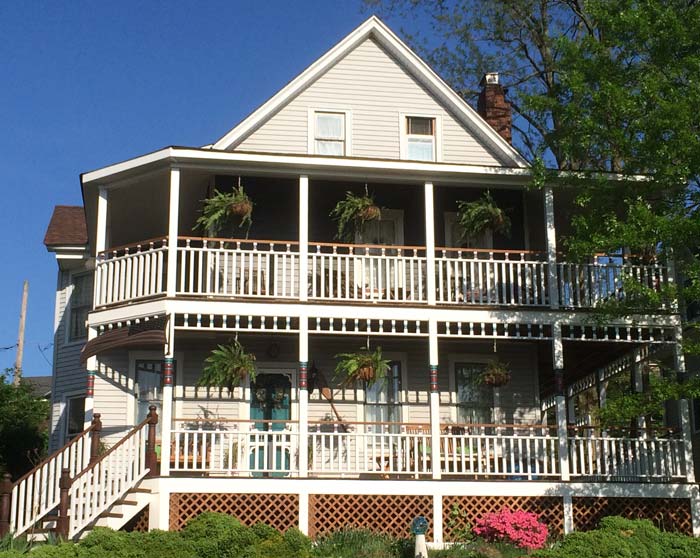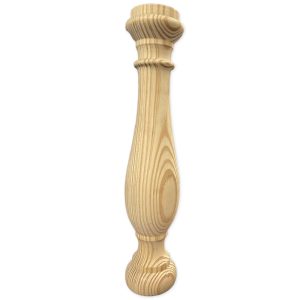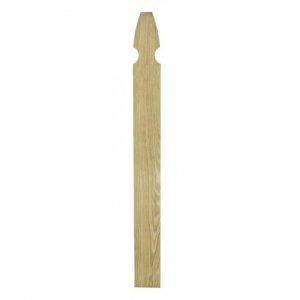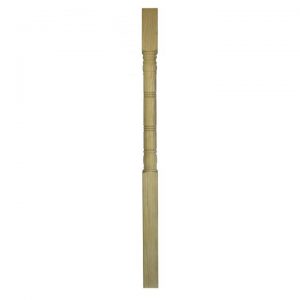Deck railing not only provides safety in elevated spaces, it’s also an opportunity to add style to your home. Consider the pros and cons to four distinctive and iconic railing styles including Chinese Chippendale, Craftsman, Sunbursts and Turned Balusters.
Chinese Chippendale Deck Railing

Chippendale style deck railing is a geometric framework that’s both beautiful and stylish. Named after Thomas Chippendale, a famous English furniture maker, who favored Chinese and Asian designs in his furniture, the Chippendale or “Chippy” as it’s sometimes called consists of repetitive geometric line patterns within a rectangle. This complex design came about during the colonial period. You’ll see this kind of deck railing on famous buildings like Thomas Jefferson’s Monticello. This mathematically complex design hinges on getting the correct diagonal measurement. Once drawn, the vertical is established relative to the diagonal measurement. The opposing lines make a zig zag shape that turns into a diamond. It looks amazing on traditional brick homes. Pros
- Ideal for horizontal rails
- This elaborate look will garner attention from neighbors
Cons
- Labor intensive
- Time intensive
- Challenging to paint or stain
- Lots of cutting
- Challenging to assemble
Craftsman Style Deck Railing
Craftsmen or Arts and Crafts style deck railings are created using a series of skinny lines used vertically and symmetrically, with horizonal patterns that give the simple appearance of homespun artisanship. The result are simple boxes in various shapes. Architects like Augustus Pugin, Frank Lloyd Wright, Gustav Stickley, William Morris, and John Ruskin were leaders in the Arts and Crafts style. These artisans were pushed to create innovative designs with simple, clean elements made of natural materials.
By adding a craftsman style deck railing to your home you’re reinforcing the values of finding joy in work, staying connected to nature, and living simply. The most famous example includes Frank Lloyd Wright’s “The Gordon House.” Craftsmen style deck railing complements Ranch style homes, American Foursquare, California Bungalows, Bungalows, and Mid-Century Modern homes.Pros
- The popular picket fence style is a clean, simple and distinctive design
- Dense fence post rails make it challenging for children to get stuck
Cons
- Can feel too restrictive
- Challenging to maintain, stain, and paint
Sunburst or Fan Deck Railing
Sunbursts are made of a series of straight lines that bloom from a center point. It creates a casual and homey feel and is often seen in the south and along the coast.

Pros
- Attractive style
- Simple installation
- Customizable with wide or narrow sunbursts
Cons
- Challenge to clean, sand, stain or paint
Turned Baluster
Turned baluster deck railings offer a traditional look to homes. Each turned baluster is tubular and has a curvy exterior. It has been used for centuries by the Romans in their architecture. Candlestick like balusters are shown most famously on the Tempietto, a shine from 1502 marking St. Peter’s crucifixion at the monastery of San Pietro in Montorio.
The balusters provided a template for other architects to copy for hundreds of years. Today this timeless design works just as well on the façade of Tiffany & Co. on Fifth Avenue in New York, the Arlington Memorial Bridge in Washington, D.C., Italy’s Ponte San Michele, and Monticello in Virginia.
Although in classical architecture turned balusters are often found in stone, wood is an attractive and cost-effective option for homes.Pros
- Timeless and elegant design
- Classy, formal, traditional
Cons
- Painting and staining are challenging
- Though to sand and repaint or re-stain
- Potentially dangerous to small children
No matter which deck railing style you choose, be sure to use S&L’s spindles to achieve the highest quality and long-lasting durability!









